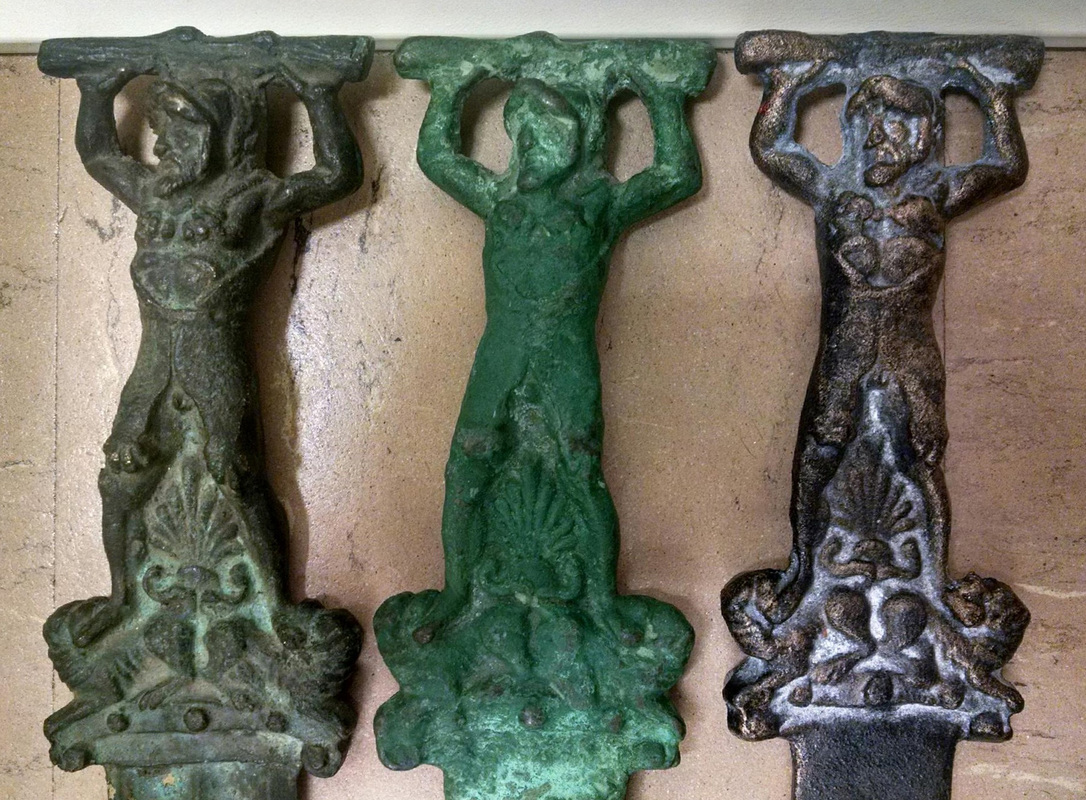I'm looking forward to having a careful look at the Italian eBay sword when I get a bigger block of time. But I wanted to share one quick observation. If I've correctly surmised that the various types of swords we've defined have a chronological significance (with Type F [California] being earliest, Type I [Design Toscano] being most recent, and Type J [Italian eBay] being somewhere in the middle), it appears that there may be a trend of decreasing size of the Hercules figure through time. Look at this image of the sword hilts lined up against a straight edge:
A decrease in overall detail from left to right is also noticeable in the line-up.
I'm not sure exactly how to explain the decrease in size, but it is intriguing. In craft traditions, a decrease in size through time of stylistic elements (i.e., parts of the design that are not stongly constrained by functional requirements) could be expected to be the natural result of accumulations in copy error. Generally, humans can't reproduce something exactly correctly by hand -- there's typically a +/- 5% error that isn't noticeable to the human brain or controllable based on our abilities. (Some researchers contend that a decrease in mean size is the expected outcome of accumulated copying error -- I've played around with that in some of my modeling work and found that the median drifts downward rather than the mean, but that's not super relevant here and it's been a long time since I thought about it.) But why would there be a trend toward decrease in size over time when a mold is used? I'm not sure why that would be, but it's interesting because it seems consistent with some kind of copy chain (i.e., copies made from copies) rather than copies made by reference to some original.
I'll have more to say about this later when I have some time to take a close look at all of these and fill in some blanks in the database.



 RSS Feed
RSS Feed
